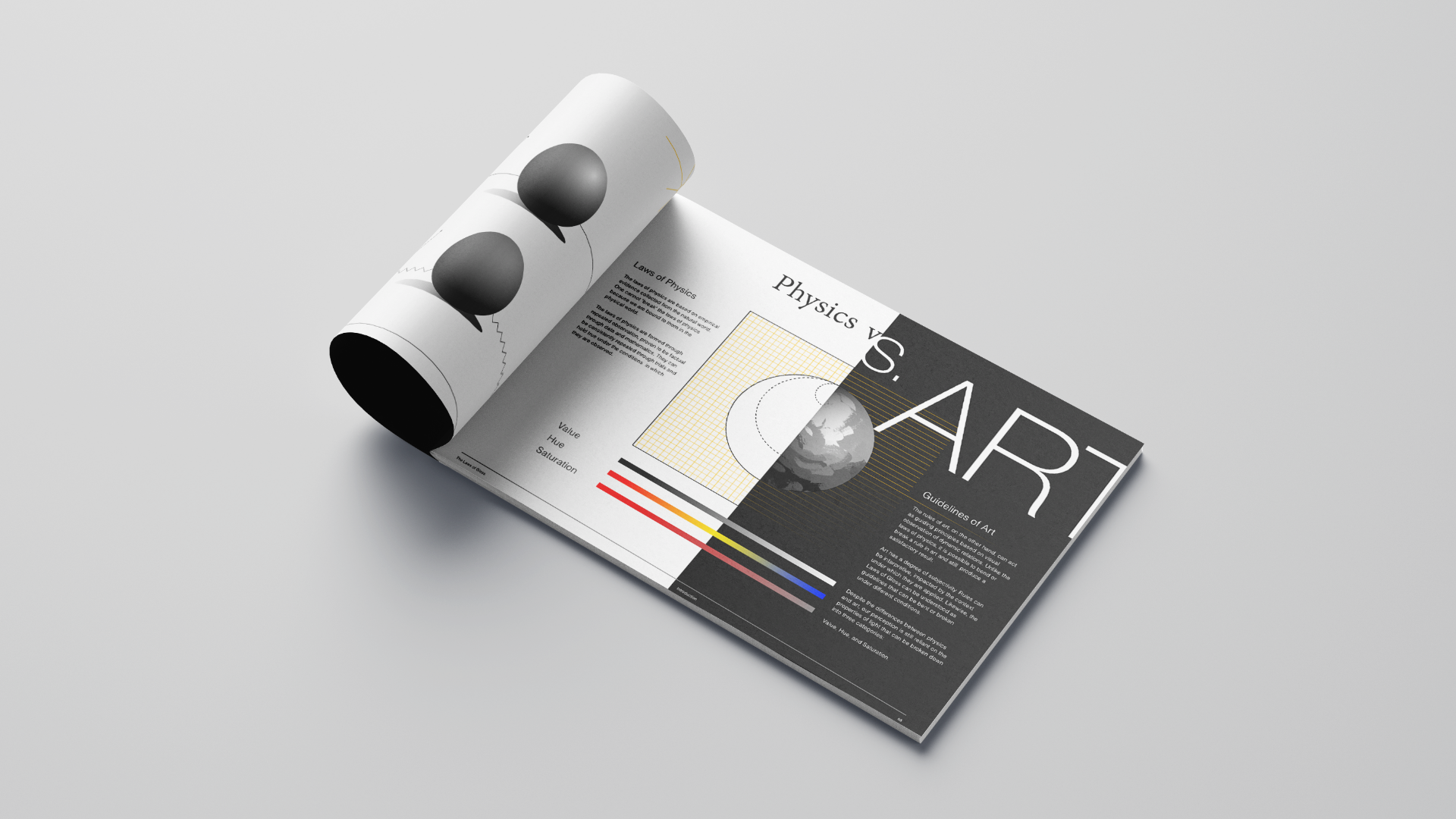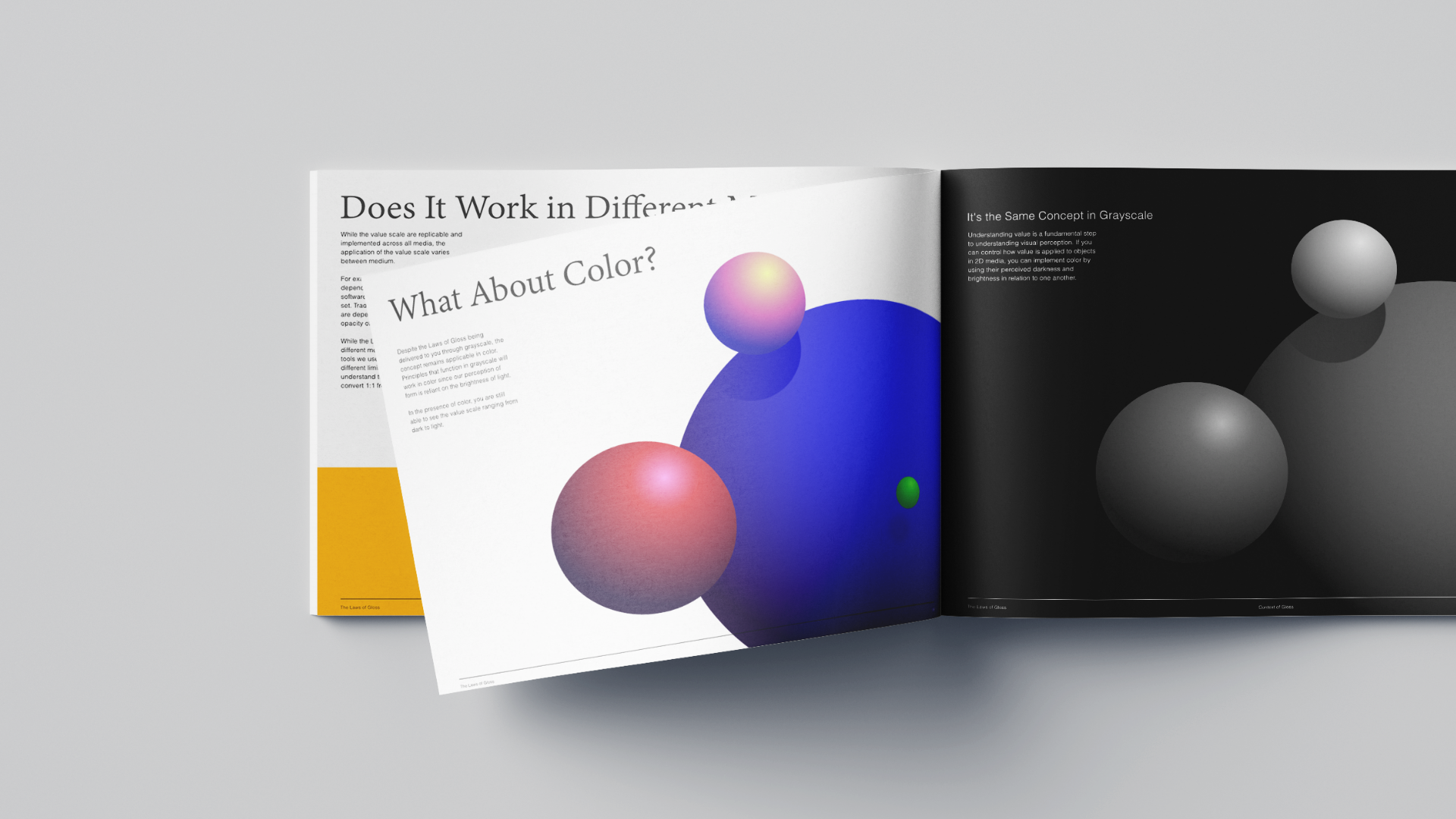
Uyen Dang

Abstract
There are properties of light that affect how we perceive surface characteristics of objects in 2D media. Properties such as reflectivity, diffusion, and varying light distribution contribute to how we can distinguish surface materials in videos and images. By understanding the basic properties of light, scientific principles can be transformed into fundamental guidelines that are applicable to any form of image-making that requires surface rendering. This project will provide the groundwork for painters, designers, and artists to explain the physics of how we perceive 2D images and how to utilize this understanding in both digital and traditional visual media.

Thesis Advisors
Earl Gee: SJSU Faculty, Graphic Design
Julio Martinez: SJSU Faculty, Graphic Design
Leonie Guyer: SJSU Faculty, Graphic Design
Research Questions
1. What properties of light affect our perception of surface materials?
2. How does art translate properties of light into visual representation?
3. How can our understanding of physics be translated into universal art principles?

Outcome
The depiction of the material world in visual media is often an art form that relies on studies and intuition. The Laws of Gloss hopes to bring abstract concepts gathered from experimentation and experience into qualitative and quantitative data, laid out to be digestible for visual artists, designers, and hobbyists alike. Understanding the fundamentals of physics provides a deeper understanding of how visual media depict the physical world.
The publication’s purpose is to provide a starting point for future abstract concepts of art and design to be placed into a concrete form that is accessible and understandable. It addresses the issues of media-dependent guides to focus on fundamental principles, making art and learning accessible to those who want to expand their knowledge on technical topics without heavy reliance on specific tools.